POSITIVE START TO THE NEW YEAR AS US INFLATION EASES.
Stock markets recorded their best start to a year since 2019 as signs of inflation easing and a possible end in sight for rate hikes sparked investors’ animal spirits.
January is the strongest month in pre-election year.
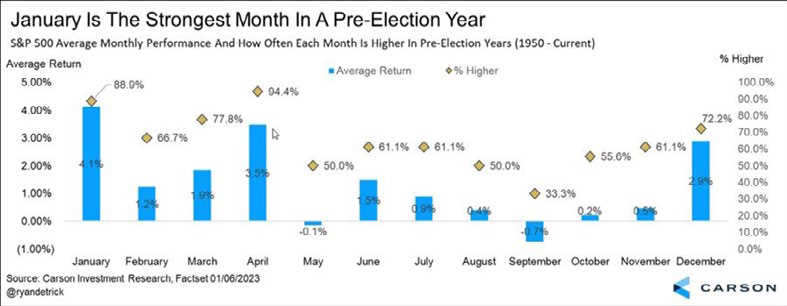
The Nasdaq did an about-turn, rising 11% in the first month of the year after declining by around 33% last year. The Euro Stoxx 50 gained 7%, the S&P 500 was up 6%, while the FTSE 100 rose more slowly than other advanced markets, up 4%.
China’s reversal in its zero-Covid policy lifted the SSE Composite 300 by 5% and the Nikkei also increased by 5% as the inflation rate came in at 4%. This was its highest level since the early 1980s, signalling a positive turnaround after decades of entrenched disinflation.
"BULLISH SENTIMENT IS BEING UNDERPINNED BY THE EXPECTATION THAT THE US FEDERAL RESERVE WILL REACH THE PEAK OF ITS INTEREST RATE CYCLE IN THE FIRST HALF OF THE YEAR"
Japan CPI Twelve-month percentage changes
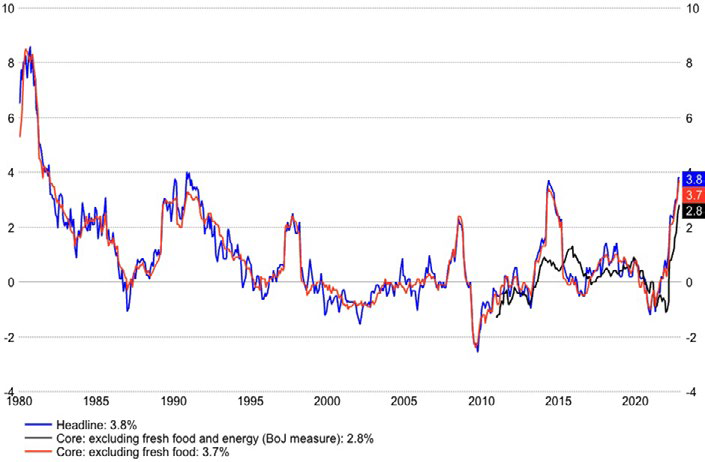
The current equity markets’ bullish sentiment is being underpinned by the expectation that the US Federal Reserve will reach the peak of its interest rate cycle in the first half of the year and may start easing again in the second half.
Recession may still be on the horizon in the US, which would quell optimism in the face of an economic slowdown that would weigh on company earnings. Some have high hopes that the recession will be shallow and short-lived, but that will largely depend on how hawkish the Fed remains this year. Fed officials have maintained their commitment to reaching around 2% inflation, but the US is still far from there. Headline inflation has come off from its peak of 9.2% but is still at 8.5%.
Latest economic data does highlight the challenges that lie ahead for the US economy and the impact 425 basis points of interest rate hikes since March are having. US retail sales fell by 1% in November and 1.1% in December. Manufacturing surveys remain in the red. Industrial production also fell by more than expected last month.
In Europe, economic growth is viewed as likely to be better than expected after the region managed to navigate the winter without running into energy issues, primarily due to the historically warm winter rather than any change in the region’s current structural energy status. Meanwhile, the economy has benefited, as evident in eurozone business surveys, particularly in Germany, surprising to the upside in January.
“EUROPE MANAGED TO NAVIGATE THE WINTER WITHOUT RUNNING INTO ENERGY ISSUES”
German business climate indices rose.
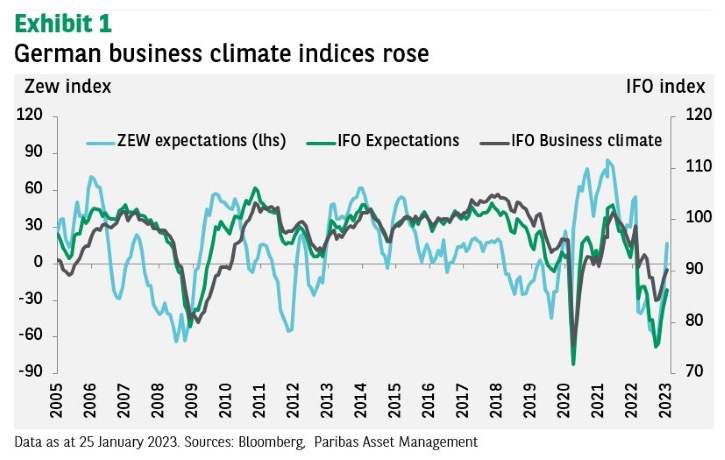
The less ebullient outlook for the US versus Europe, China and emerging markets is expected to knock the dollar off its perch this year and elevate the yen’s safe haven status. This trend is already evident, with the Yen appreciating to Y130 from its weakest point last year of almost Y150 to the dollar.
Positive signs stem from the Bank of Japan’s December announcement that it would double the yield curve ceiling to 0.5% from 0.25%, indicating that it could be en route to removing the yield curve control that has been in place since September 2016.
The dollar has lost momentum as global growth expectations have improved for this year, inflation has begun easing and China’s reopening has been far quicker than expected.
China re-opening continues to boost asset prices.
Fears that a wave of Covid cases would damage financial markets as China exited its zero-Covid era have not materialised and cases are expected to have peaked in December. While economic growth fell to 2.9% last year, economists are upgrading their forecasts to 5%-plus, in line with the growth rate initially expected in 2022.
The government has committed to revitalising the economy and is again emitting market-friendly signals after scaring investors away with their surprise regulatory tightening measures, particularly in the internet sector.
“WHILE CHINA ECONOMIC GROWTH FELL TO 2.9% LAST YEAR, ECONOMISTS ARE UPGRADING THEIR FORECASTS TO 5%-PLUS”
China exposed stocks have outperformed sharply in recent months China exposed stocks relative returns
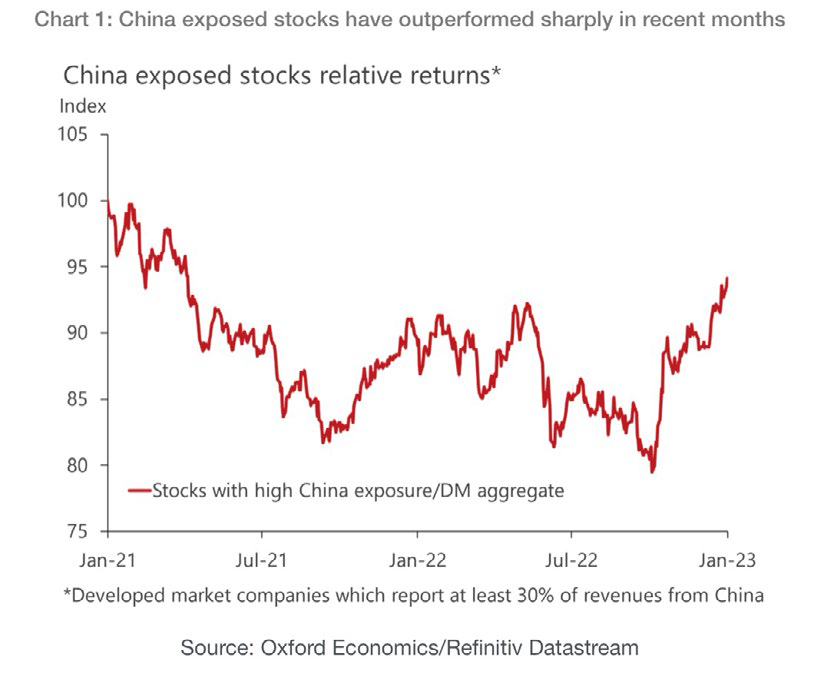
Reopening prospects have significantly boosted commodity prices in anticipation of a return in Chinese demand. Optimistic expectations hinge on the government’s support measures in the property market, which could facilitate a real estate recovery. The prospect of increased investment in renewable energy and new electric vehicles has already been driving copper higher towards the end of 2022. Restocking steel mills will provide further impetus to the iron ore price, which has already increased more than 40% from its October levels last year.
The oil price hasn’t yet gained as much ground as a result of hesitation over whether demand will pick up as quickly but some estimates suggest that China demand could add $5 to the oil price, with international travel potentially an additional tailwind.
“THE PROSPECT OF INCREASED INVESTMENT IN RENEWABLE ENERGY AND NEW ELECTRIC VEHICLES HAS ALREADY BEEN DRIVING COPPER HIGHER”
China demands boost hard commodities but oil still trails
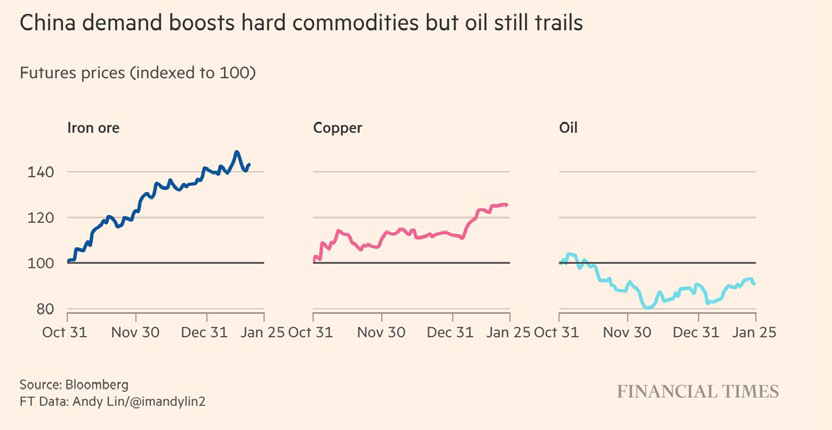
GLOBAL MARKET RETURNS JANUARY 2023
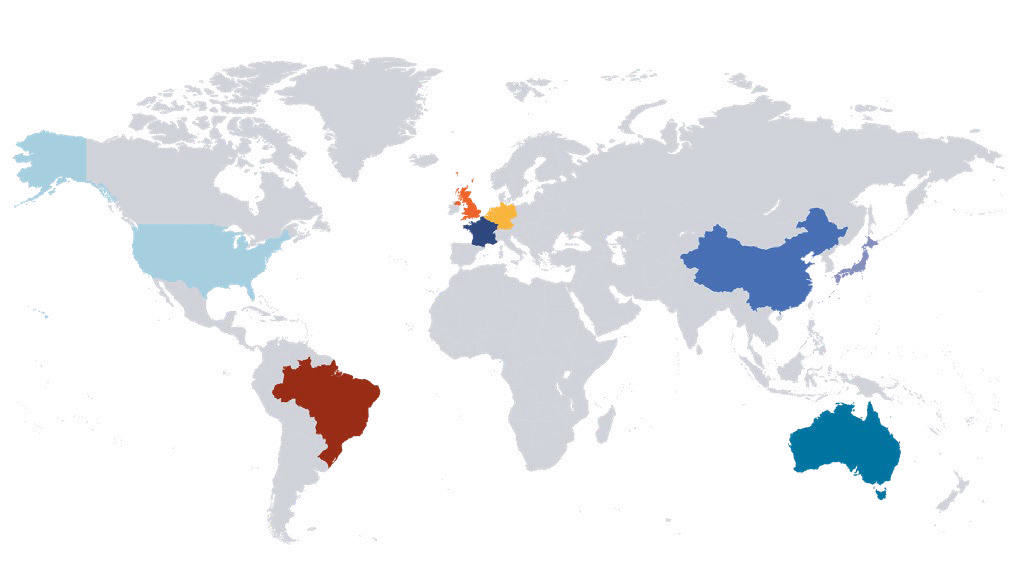

Contact Us
Fill in the form below and chat to one of our Financial Experts Today:
By submitting this form you agree to be contacted by Imperius Wealth in relation to their services.
If you would like to hear more detail on the options available to you, get in touch with us today by filling out the form below.
Need assistance with your retirement plans? Talk to Mike today!
Subscribe to the latest news and insights from Imperius Wealth
imperiuswealth.com needs the contact information you provide to us to contact you about our products and services. You may unsubscribe from these communications at anytime. For information on how to unsubscribe, as well as our privacy practices and commitment to protecting your privacy, check out our Privacy Policy.





